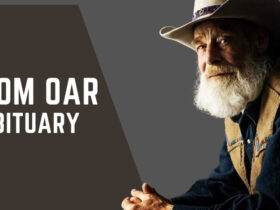PTSD doesn’t just live in your mind. It seeps into your body, your relationships, and your ability to function. It turns normal sounds into alarms and ordinary situations into threats. Some people feel stuck in an endless replay of what happened, while others go completely numb. Either way, the world stops feeling safe.
There’s a reason why PTSD can feel like an unbreakable cycle. Trauma physically changes the brain. The amygdala, which controls fear, goes into overdrive, while the prefrontal cortex—the part that tells you when things are actually okay—goes quiet. Your body gets hijacked by survival mode, whether the danger is real or not. But just because it feels permanent doesn’t mean it is.
The Trauma Response That Won’t Shut Off
Most people have been through something stressful or terrifying, but not everyone gets PTSD. So why do some people get stuck while others move on? The answer isn’t just about what happened—it’s about how the nervous system reacts.
When a traumatic event occurs, the brain releases stress hormones like cortisol and adrenaline to help you survive. If the event passes and the body processes it correctly, those levels return to normal. But when the trauma is too intense or happens repeatedly, the body can’t reset. It stays locked in a fight-or-flight state.
That’s why PTSD isn’t just about memories. It’s physical. Your heart races at a slammed door. Your muscles tighten when someone walks up behind you. You might struggle with sleep, digestion, or chronic pain, all because your nervous system is still running like the threat is happening right now.
The worst part? The trauma response can make people isolated. Relationships feel exhausting. Crowds feel unbearable. Even asking for help can feel risky when trust itself has been broken. But PTSD doesn’t fix itself by waiting it out.
Why PTSD Treatment Needs to Be Intense
Healing from trauma isn’t as simple as talking it out. If it were, PTSD wouldn’t last for years—or decades—for some people. Trauma changes the nervous system on a deep level, which means recovery needs to be just as powerful.
That’s why high-level treatment matters. Whether you go to residential trauma treatment programs in California, Hawaii, or anywhere else, the important thing is you go. These aren’t just therapy sessions. They’re environments designed to rewire the brain. The goal isn’t to just learn about trauma—it’s to reset the way the body and mind react to it.
Trauma doesn’t live in logic, which is why traditional therapy alone can fall short. Residential programs use intensive methods like EMDR (eye movement desensitization and reprocessing), somatic therapies, and neurofeedback to help the brain release trauma responses. Some focus on holistic approaches, incorporating movement, nutrition, and mindfulness to help the body heal alongside the mind.
For many people with severe PTSD, short-term outpatient therapy isn’t enough. When trauma has taken over, treatment needs to be immersive. The goal isn’t just to cope—it’s to give the brain a fighting chance at rewiring for safety instead of fear.
When PTSD After an Accident Hijacks Your Identity
Some people expect PTSD after war or abuse, but it doesn’t have to come from violence. A car crash, a medical emergency, or any life-threatening event can be just as devastating. When the body survives but the mind doesn’t process the event as “over,” life starts to shrink.
For people who develop PTSD after an accident, even everyday activities become impossible. Driving past the crash site can trigger a full-body panic. Loud noises feel unbearable. Something as small as the scent of gasoline or the feeling of a seatbelt can set off a trauma response.
The worst part? Many people dealing with this kind of PTSD feel like they should just “get over it” because it wasn’t intentional harm. But trauma doesn’t work that way. The brain doesn’t distinguish between a war zone and a car accident—it only knows fear. And if that fear isn’t processed, it gets stuck.
The good news is that treatment works no matter what caused the trauma. The brain can heal when it’s given the right tools. Exposure therapy, EMDR, and body-based approaches can help the nervous system relearn what’s safe and what isn’t. And the sooner treatment starts, the less trauma has a chance to take hold.
Why Avoidance Feels Like the Only Option—But Isn’t
PTSD thrives on avoidance. Avoiding reminders of the trauma feels like the only way to stay safe. The problem is, avoidance makes PTSD worse. The more situations, people, or places get labeled as threats, the smaller life becomes.
That’s why exposure is such a powerful part of PTSD recovery. It doesn’t mean forcing yourself into unsafe situations—it means slowly retraining the brain to understand what’s actually dangerous and what isn’t. This could mean stepping into social settings again, getting behind the wheel, or simply learning to sit with discomfort instead of running from it.
The hardest part of trauma recovery is trusting that healing is even possible. PTSD makes people believe that they’ll always be this way, that life will never feel normal again. But the brain is adaptable. Neuroplasticity—the brain’s ability to change—means that no matter how deep the trauma runs, healing is possible. It just takes the right kind of intervention.
The First Step Out of Survival Mode
PTSD can make life feel unrecognizable. It can steal sleep, relationships, and any sense of control. But it doesn’t have to be permanent. The brain and body are built to heal—it’s just that trauma gets in the way of that natural process.
Real recovery means getting the right treatment, not just hoping it fades over time. Trauma might rewire the brain, but with the right approach, it can be rewired again. And when that happens, life doesn’t just go back to “before.” It becomes something new—something that trauma no longer controls.












